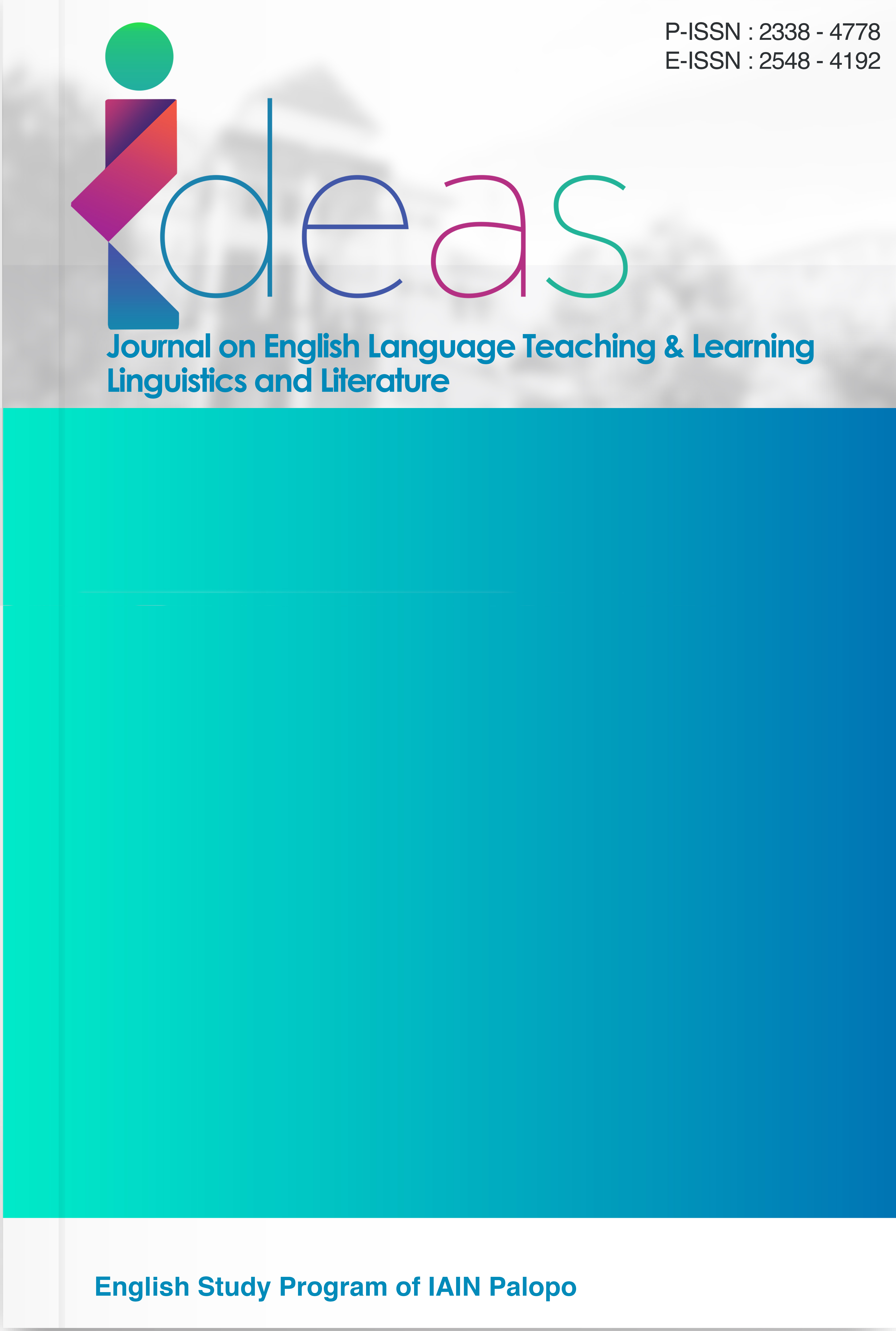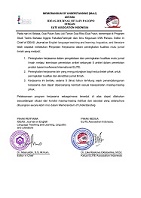Translation Ideology in the Indonesian-English Translation of Culture-Bound Words in Okky Madasari’s Novel Entrok
DOI:
https://doi.org/10.24256/ideas.v13i2.6244Keywords:
translation, culture-bound words, translation techniques, domestication, foreignizationAbstract
This study aims to analyze the translation of culture-bound words in Okky Madasari’s novel Entrok and its English translation, The Years of the Voiceless. This research employs a descriptive qualitative method to identify the translation techniques used and to determine the dominant translation ideology applied in the translation process. The findings reveal that nine translation techniques were used in translating culture-bound words, with adaptation being the most frequently employed technique. The analysis also indicates that domestication is the predominant translation ideology, as most culture-bound words were translated in a way that makes them more accessible to the target language readers. However, some instances of foreignization were also found, particularly when preserving the original cultural meaning was necessary. This study contributes to the field of translation studies by providing insights into how culture-bound words are translated in literary works. Additionally, it has implications for translation education, as understanding these techniques and ideologies can benefit students and translators in dealing with cultural elements in translation.
References
Boas, F. (1942). Language and culture. In Columbia University. Columbia University.
Catford, J. C. (1965). A linguistic theory of translation. Oxford University Press.
Fitriyah, F. (2021). Cultural words translation strategies in mary higgins clark’s novel the anastasia syndrome and other stories. Language Literacy: Journal of Linguistics, Literature, and Language Teaching, 5(2), 366–374. https://doi.org/10.30743/ll.v5i2.4439
Hoed, B. H. (2006). Penerjemahan dan kebudayaan. Bandung: Dunia Pustaka Jaya.
Jiang, H. (2022). Domestication and foreignization in idiom translation. International Journal of Education and Economics, 5(3), 276–277. https://doi.org/10.4324/9780203864838-17
Molina, L., & Albir, A. H. (2002). Translation techniques revisited: a dynamic and functionalist approach. Meta, 47(4), 509–511. https://doi.org/10.7202/008033ar
Newmark, P. (1988). A textbook of translation (Vol. 65). Pearson Education Limited.
Pertiwi, C. K., Al Arief, Y., & Febriyanti, E. R. (2021). Translation ideology in translating narrative text: a case study on efl students’ translations. International Conference on Education, Language, Literature, and Arts (ICELLA), 587(9), 37–42. https://doi.org/10.2991/assehr.k.211021.006
Rizki Dongoran, N., & Rakasiwi, R. (2017). Foreignization and domestication ideological strategies in the translation of the lion, the witch, and the wardrobe into sang singa, sang penyihir, dan lemari. International Journal of Language Learning and Applied Linguistics World (IJLLALW), 15(1), 49–57. www.ijllalw.org
Supatmiwati, D., Anggara, G. W. P., & Syahid, A. (2024). The influence of translation technique on translation ideology in the novel. Journal of Language and Literature, 2(10), 487–496.
Syafutri, T., & Sujarwati, I. (2021). An analysis of ideology in translation on bilingual story book for children. Journal of Development and Innovation in Language and Literature Education, 2(2), 180–199. https://doi.org/10.52690/jadila.v2i2.198
Venuti, L. (1995). The translator ’s invisibility. Routledge.
Wang, F. (2014). An approach to domestication and foreignization from the angle of cultural factors translation. Theory and Practice in Language Studies, 4(11), 2423–2427. https://doi.org/10.4304/tpls.4.11.2423-2427
Downloads
Published
Issue
Section
Citation Check
License
Copyright (c) 2025 Afnani Salwa Nisrina, Issy Yuliasri, Widhiyanto

This work is licensed under a Creative Commons Attribution-ShareAlike 4.0 International License.
Authors retain copyright and grant the journal right of first publication with the work simultaneously licensed under an Attribution-ShareAlike 4.0 International (CC BY-SA 4.0) that allows others to share the work with an acknowledgement of the work's authorship and initial publication in this journal.
Authors are able to enter into separate, additional contractual arrangements for the non-exclusive distribution of the journal's published version of the work (e.g., post it to an institutional repository or publish it in a book), with an acknowledgement of its initial publication in this journal.
Authors are permitted and encouraged to post their work online (e.g., in institutional repositories or on their website) prior to and during the submission process, as it can lead to productive exchanges, as well as earlier and greater citation of published work (See the Effect of Open Access)




